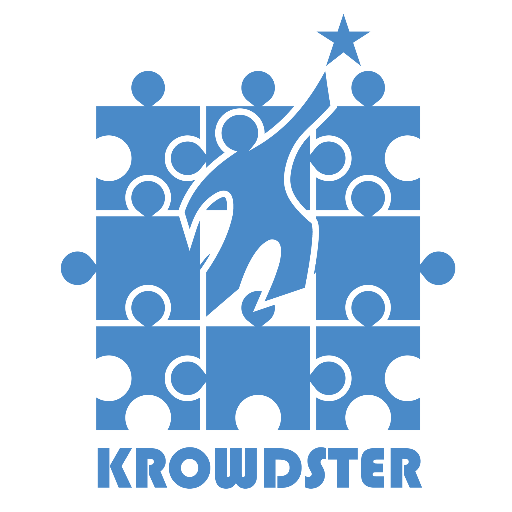Krowdster: Consigli pratici per una campagna di Crowdfunding
Krowdster: Oggi riportiamo un articolo di Josef Holm , fundraiser e fondatore di Krowdster, una piattaforma americana che si occupa di analisi di mercato e strategia di marketing principalmente rivolte a campagne di Crowdfunding di tipo Equity e Rewards.
Per evitare rischi di male interpretazione di alcuni passaggi dell’articolo, abbiamo preferito pubblicarlo in lingua originale, con l’autorizzazione dell’autore stesso.
Krowdster: Campagna di Crowdfunding
Crowdfunding Launch Checklist:
1. Run a PreCampaign
One of the best things you can do right away, before working on completing the rest of
this list, is to launch a pre-campaign page on Thunderclap.it or LaunchRock . Both services
allow you to quickly and easily create a page that announces your actual crowdfunding
campaign and that is designed to let people subscribe to your email list and pledge to
share your campaign on social media when it launches. The typical duration of a
pre-campaign is 60-90 days.
2. Legal & Taxes
Unless you are already incorporated, make sure to set up an LLC for your crowdfunding
project and get a business bank account. Revenue from rewards campaigns and
pre-sales of goods are taxable income so talk to your CPA. LLCs are rather simple and
inexpensive to set up on sites like Legalzoom .
3. Social Media
Another thing you cannot start soon enough is to bolster is your social media presence.
No matter how many or few followers you have, you’ll likely need more to reach your
goal and this takes time. Tools like Crowd Builder make it very easy to gain a highly
targeted and engaged following on Twitter. This will get you between 1000-3000 new
followers per month and allow you to promote your pre-campaign as your audience
grows. How do you know if your social media following is strong enough to reach your
crowdfunding goal? Social Capital Gauge is a big data powered tool that can tell you
based on over 600,000 analyzed Kickstarter and Indiegogo campaigns. Building an
audience on social media takes time and should be started 3-6 months before launching
your campaign depending on your crowdfunding type, funding goal and current follower
count.
4. Research and Picking the Right Platform
Depending on the kind of crowdfunding campaign you want to run, you have a plethora
of platforms at your disposal. Don’t assume that the well known platforms like Kickstarter
and Indiegogo automatically are your best bet. These platforms are very cookie cutter
and there is a lot of competition for eyeballs in the form of other campaigns. For film &
video projects you could check out Tubestart or to raise up to $50m in a so called
Mini-IPO via Regulation A+ there is Bankroll.Ventures . Generally, smaller platforms are
much more willing to go out of their way to support projects and offer niche specific
features that are lacking on the mainstream platforms.
5. Set Funding Goal
Much has been written about setting the right funding goal and yet it remains somewhat
of a crystal ball science. Because every campaign and every situation is unique, you have
to do your own calculations. In the most basic scenario your funding goal needs to
include these things:
Cost of completing the project
+ Cost of fulfilling rewards
+ Legal
+ PR & marketing
+ Platform & processing fees: ~10%
+ 30% cushion
= Minimum Funding Goal
Remember that only about 2% of all crowdfunding campaigns raise more than $100k and
setting a too ambitious goal can deter backers. It’s better to reach your goal in the first
week and have 3 weeks left to reach stretch goals and riding the wave of being
successfully funded. A much more elaborate approach to setting the right rewards price
point can be found in the free ebook titled “ How to set Crowdfunding Goals ”
Krowdster: Campagna di Crowdfunding
6. Set Reward Tiers
It makes sense to research the most successful campaigns similar to yours and see which
rewards did better than others. There’s also data on what price poinork ts wbest in
certain Kickstarter and Indiegogo categories. The best rewards are those you can digitally
fulfill and that have no risk of being delayed. According to Indiegogo, the most popular
reward price point is $25, on Krowdster you can see a statistical comparison of
Kickstarter, Indiegogo, Tubestart, Rockethub and Pozible rewards pricing tiers, filtered by
categories.
7. Craft Your Story
Your story is the written description of your crowdfunding campaign that will be visible
on your campaign page and is one of the most important elements of your campaign. In
business plan terms this is your “executive summary” and should include what your
project is about, what you need the money for and what you offer in return, as well as
anything else that potential backers may need to know to be able to decide whether or
not to support your campaign. Make your story at least 400-600 words and include
images or renderings of prototypes as well as video to drive the message home. Have
your story reviewed by complete strangers and optimize it based on their feedback until
your messaging is clear and concise.
8. Make a Video
The campaign pitch video is without a doubt the most important marketing tool you have
available. A well-made video, and I don’t mean thousands of dollars spent on fancy sound
design and animations, but a video that tells your story in an engaging and genuine way
is what you want. Keep your pitch under 3-4 minutes and tell the most exciting
information right at the beginning to keep people watching the rest of your video. From a
production standpoint it is not important aim for a Hollywood grade production value.
People know that you are strapped for cash as after all you are crowdfunding. On the
contrary, spending too much time on a video may make you come across as having to
make up for lack of substance with putting on a pretty show. Simply don’t insult your
viewers with bad lighting and sound and you’ll be fine.
9. Secure the First 30%
This is arguably the hardest thing to accomplish but also an important constant in most
successful campaigns across all platforms and verticals. Let’s circle back to #5 of this list
and remember the challenge of setting the right funding goal. Let’s assume that your
minimum funding goal is $50,000 which means that you need to secure $15,000 (30%)
from partners, friends and family who will make their pledge as soon as your campaign
goes live to give you that initial push your campaign needs to stand a chance of going
viral and attracting pledges from strangers.
10. Prepare PR & Media Outreach
Media outlets, journalists and bloggers play a pivotal role in the crowdfunding ecosystem
and it is important to understand that simply running a crowdfunding campaign is no
longer newsworthy. In order to get coverage for your project, it is crucial to have followed
all the steps above and to build media lists of highly targeted journalists and bloggers
who have covered topics in your niche. Influencer Search is a tool to quickly identify
influencers, journalists and bloggers in any vertical and connect with them on social
media. You also need to build lists of media outlets and news sites that publish content
in your niche that went viral. You also need a well written press release that you can
share with the media. Here’s a blog post on how to write the perfect press release for
your crowdfunding campaign .
For more crowdfunding education and marketing solutions visit www.Krowdster.co
www.phifoundation.com
PHI Fondazione Social Innovation Community
È il nuovo modo di concepire l’engagement sociale al servizio della collettività
PARTECIPA ANCHE TU AL CAMBIAMENTO
ENTRA NELLA PRIMA SOCIAL INNOVATION COMMUNITY
Redazione
PHI Foundation



